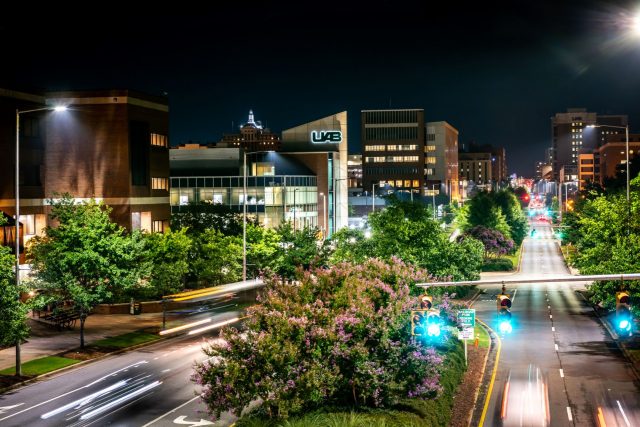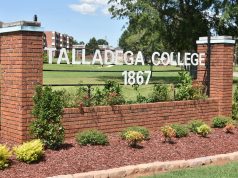UAB Magazine
Written by Charles Buchanan, Brett Bralley and Jay Taylor with editorial contributions from Matt Windsor and UAB Public Relations. Images from UAB Archives, Rachel Hendrix, Andrea Mabry, Sarah Parcak, Steve Wood and Getty Images. Web design by Tyler Bryant. Reprinted by permission of UAB Magazine.
UAB’s birth was like a ray of sunlight punching through the smog.
In 1969 the newly independent university, uniting a pioneering academic medical center and a growing extension center, brought the promise of a brighter future to a city eager for change.
Birmingham is better because of UAB. So are Alabama, America, and the world. In the following pages, discover some of the many ways that UAB has fulfilled its promise—by saving lives, solving problems, expanding knowledge, and opening doors—over 50 years.
1
Best of the best
UAB’s accolades shine a global spotlight on Birmingham and Alabama:
- No. 1 young university in the United States for two years (2018, 2019) and #10 worldwide (2018) Times Higher Education World University Rankings
- Top 1 percent of universities worldwide Center for World University Rankings, 2018
- No. 1 up-and-coming university U.S. News & World Report, 1992
- No. 1 Alabama hospital, with 10 specialties in the top 50 nationwide U.S. News & World Report’s Best Hospitals 2018-2019
- 14 top-25 graduate programs U.S. News & World Report’s America’s Best Graduate Schools 2020
- 350 physicians among America’s best Best Doctors in America 2017-2018
- 3 Rhodes scholars 2000, 2012, 2015
- 5 national championships won by UAB Ethics Bowl (2010), Bioethics Bowl (2011, 2015, 2019), and Mock Trial (2006) teams
2
A way to retrain the brain
Most scientists once believed that neuroplasticity—the brain’s ability to grow or repair itself—ended in childhood. But research by UAB neuroscientist Edward Taub, Ph.D., contributed to a shift in thinking, and in the 1990s he developed constraint-induced (CI) therapy for stroke patients with poorly functioning limbs. As the intensive training helps patients learn to accomplish tasks with their affected limbs, the brain adapts by strengthening communication with those parts of the body. And the results have been remarkable: Most patients see a clinically significant level of improvement in their ability to use their affected limbs, and brain scans have shown an increase in gray matter. Taub and UAB clinical psychologist Gitendra Uswatte, Ph.D., have used CI therapy to help thousands of stroke patients—and adapted it for patients impacted by cerebral palsy, traumatic brain injury, multiple sclerosis, and spinal cord injury. Today CI therapy is in use worldwide.
3
Discoveries on ice
UAB scientists conduct a lot of research in the field—but none may go as far afield as James McClintock, Ph.D.; Charles Amsler, Ph.D.; and Maggie Amsler. Their investigations take place at Palmer Station, Antarctica—6,898 miles from their campus offices. For two decades, the biologists have led teams that dive into the frigid waters surrounding the icy continent to study the chemical ecology of the unique marine algae and invertebrates living there. What they’ve discovered could aid the search for new drugs to help humans. The group also chronicles the dramatic impact of climate change, such as ocean acidification, on Antarctic marine life. “You can see climate change happening there like no other place on earth,” says McClintock.
4
A pinch of prevention
UAB endocrinologist Constance Pittman, M.D., turned her research passion—iodine’s impact on thyroid function—into a global mission. In the 1990s and 2000s, she teamed up with Kiwanis International and UNICEF to help eradicate iodine deficiency disorders (IDD), a prevalent cause of cognitive disabilities. Pittman traveled the world to convince companies to add iodine to table salt—the simplest solution for preventing IDD. And her work helped make a lasting impact.
5
Target: Diabetes
In 1973, UAB opened the nation’s first public diabetes hospital—and the first linked with an academic medical center. Today physicians on the front lines of the diabetes epidemic have an exciting new option to help their patients, thanks to breakthrough research from UAB’s Comprehensive Diabetes Center.
6
Sharing stories that matter
WBHM 90.3 FM radio went on the air in 1976 as the 200th National Public Radio (NPR)-affiliated station. A member-supported service of UAB, WBHM provides global news and award-winning local coverage to Birmingham and the surrounding region. The station also recently welcomed StoryCorps, an NPR-affiliated initiative, to collect stories from the Birmingham community that will be housed at the Library of Congress in Washington, D.C.
7
Book of Life
It’s tough to find a physician anywhere in the world who hasn’t learned a few things from Tinsley Harrison, M.D. The legendary School of Medicine cardiologist and dean created and edited Harrison’s Principles of Internal Medicine, which has been reprinted 20 times, translated into 14 languages, and become “arguably the most recognized book in all of medicine,” according to the Journal of the American Medical Association.
8
Foresight
The School of Optometry has been a pioneer since it opened in 1969 as the nation’s first optometry school associated with an academic medical center. Three years later, it became the first optometry teaching program affiliated with a Veterans Administration (VA) hospital, establishing a national model. Today more than 2,500 optometry staff and students from various schools work in the VA system nationwide.
9
Helping our hometown
Living and working in the heart of the city, UAB students, faculty, and staff can’t help but feel a connection to Birmingham. Here are just a few ways Blazers have volunteered to support their neighbors:
- 250-plus service-learning courses blend academics and civic engagement, providing students the opportunity to apply their newfound knowledge to help community nonprofits address pressing issues.
- Habitat for Humanity houses have been built in Birmingham by thousands of student and employee volunteers.
- 20 years ago, students launched Into the Streets, a biannual day of service to support the community. Other student volunteer initiatives include the MLK Day of Service on Martin Luther King Jr.’s birthday and Blazers on Break, an alternative spring break program.
- 40,000 hours (and counting) have been committed to community service by faculty, staff, and students through BlazerPulse, an online engagement platform.
- $29M plus in faculty and staff donations have supported local nonprofits since 1984 via the UAB Benevolent Fund, the employee charitable giving campaign.
10
A whole new ball game
Gene Bartow Men’s basketball coach
1977-1996
UAB started a winning tradition in 1977 when it hired coach Gene Bartow away from powerhouse UCLA to start a men’s basketball program. He created a legendary team able to topple top rivals and reach the NCAA Tournament in just its third season—the first of 15 NCAA Tournament and 12 National Invitational Tournament appearances on its record. As UAB’s first athletic director, Bartow also helped UAB compete in other arenas. Today student-athletes in 18 sports give Birmingham reasons to cheer. Take a spin through some of the Blazers’ most memorable moments:
- Bill Clark Football head coach 2014-present
- 1982 — Men’s basketball defeats Virginia for a berth in the NCAA Elite Eight.
- 1991 — Blazer baseball advances to the NCAA tournament for the first time. Men’s tennis and women’s volleyball also win conference titles.
- 1993 — UAB defeats the Alabama Crimson Tide en route to its second appearance in the NIT Final Four in Madison Square Garden. Frank Schaffner and the men’s tennis team earn a national ranking and NCAA Tournament berth.
- 2002 — Football’s Bryan Thomas goes to the Jets in the NFL draft’s initial round—a first for the Blazers. Graeme McDowell becomes the #1-ranked collegiate golfer.
- 2004 — Men’s basketball downs one-seed Kentucky to return to the Sweet 16. The football team goes bowling for the first time, taking on Hawaii in the Sheraton Hawaii Bowl.
11
New views of history
It’s as if “Indiana Jones and Google Earth had a love child.” That’s how UAB anthropology faculty member and National Geographic fellow Sarah Parcak, Ph.D., described space archaeology to Stephen Colbert on The Late Show in 2016. She has pioneered the use of high-resolution satellite imagery to search for the buried remains of lost civilizations. And her discoveries have thrilled people worldwide, including Colbert. She was even mentioned in a Jeopardy! answer earlier this year.
12
Defense team
UAB immunologists have been among the first to shed light on the mechanisms powering our body’s defenses:
- After breakthrough research that discovered and defined B lymphocytes—a type of white blood cell—Max Cooper, M.D., explored B-cell development at UAB. His work helped lay the groundwork for modern immunology, from monoclonal antibodies for cancer to bone marrow stem cell transplants.
- In 1971, Jiri Mestecky, M.D., Ph.D., published a landmark study describing the protein immunoglobulin A (IgA) that helped reveal the role of bodily secretions such as saliva in immunity.
- T lymphocytes include Th1 and Th2 cells, which play different roles in protecting the body. But a team led by Casey Weaver, M.D., the Wyatt and Susan Haskell Endowed Professor for Medical Excellence in pathology, discovered a third kind, Th17, that could hold the key to new treatments for rheumatoid arthritis, multiple sclerosis, and other autoimmune diseases.
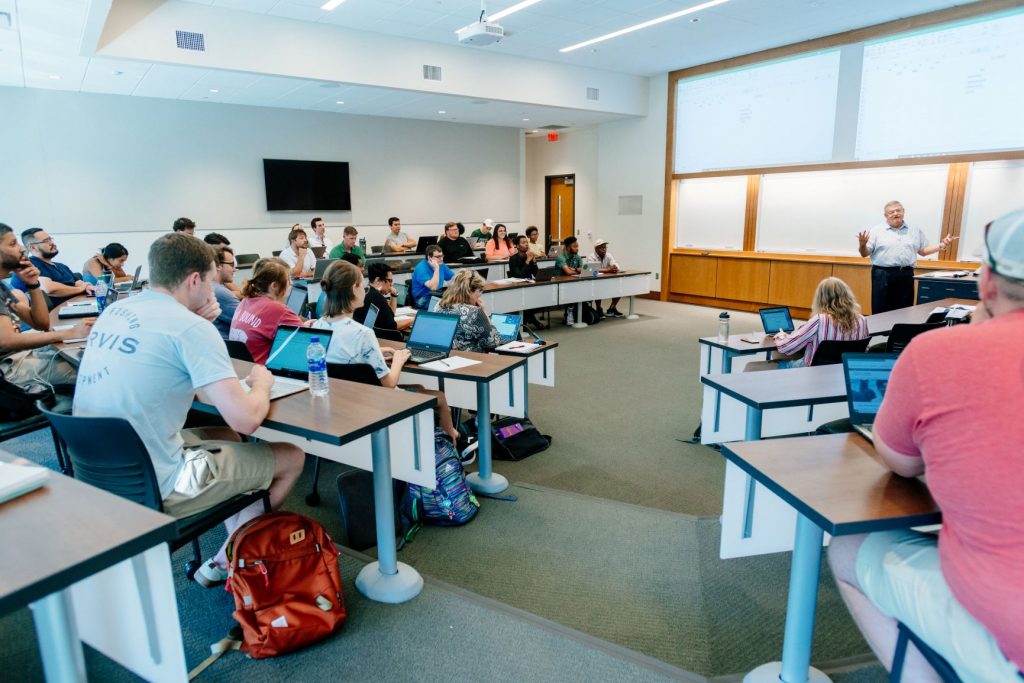
13
Game changers
Future football helmets may better protect athletes thanks to mechanical engineering professor Dean Sicking, Ph.D. (Before coming to UAB, he developed the lifesaving SAFER barriers used on NASCAR and IndyCar courses.) Analyzing data from thousands of helmet-to-helmet impacts in football, Sicking has developed designs for a new helmet that could address concussions—absorbing as much energy of the impact as possible so that the athlete has less risk of brain injury.
14
The dividends of discovery
In 2018-2019, UAB received $602 million in research grants and awards—just one year after surpassing the $500-million milestone for the first time. “We are aiming high and exceeding our goals, and it is a testament to the UAB research community’s great ideas, hard work, and will to succeed,” says Christopher Brown, Ph.D., vice president for research. A rise in research funding means more opportunities to explore the frontiers of knowledge—but it also enables UAB to attract top minds from around the country in health care, engineering, the sciences, and more, plus create new jobs that boost the local economy. Want to ensure that UAB continues its upward trajectory? Philanthropic support helps position the university to attain competitive research grants.
15
Giant leaps
Space is the place for UAB people and technology:
Researcher Larry DeLucas, O.D., Ph.D., became the first optometrist in orbit with a 1992 mission aboard the shuttle Columbia. There he conducted experiments to grow protein crystals, which give scientists a 3D view of protein structures—and a greater understanding of the roles they play in disease. DeLucas also served as chief scientist for the International Space Station in 1994-1995.
Astrophysicist Thomas Wdowiak, Ph.D., passed away in 2013, but his name lives on—on Mars. The Red Planet’s Wdowiak Ridge honors the physics faculty member’s role in NASA’s Mars Exploration Project. Wdowiak was in charge of operating the Mossbauer spectrometers onboard the Spirit and Opportunity rovers that helped uncover firm evidence that water once existed on Mars.
16
Focus on finances
Would you like to get better at saving, budgeting, or investing? Or do you dream of launching a business? The Regions Institute for Financial Education in the Collat School of Business has been helping people throughout the community develop practical, lifelong financial management skills since 2015. Some of its programs include a Money Math Camp for middle schoolers, a College Bridge Camp to prepare high schoolers for life after graduation, and for adults, a Do-It-Yourself Credit Repair Workshop.
17
Going green
Campus expansions have reshaped Birmingham’s Southside, and UAB works hard to be a good steward of that space—and set a sustainable example. In 2008, UAB brought open green space into the heart of Birmingham by converting a city street into the Campus Green. Now UAB is aiming to reduce its greenhouse gas emissions by 20 percent and establish a clean energy standard of 20-percent renewable energy by 2025.
18
Ingenuity vs. Infection
Virus vanguards
Antiviral therapies are essential for treating everything from influenza to HIV. In 1977, UAB pediatrics experts Richard Whitley, M.D., and Charles Alford, M.D., helped spark the antiviral revolution by developing vidarabine, the first drug to treat encephalitis caused by the herpes simplex virus. In the 1990s, Whitley and his team transformed the herpes virus into a genetically engineered weapon against tumors.
Vaccines for everyone
The laboratory of Moon Nahm, M.D., is “a national treasure,” notes the National Institutes of Health. But its discoveries could help protect millions of children worldwide threatened by S. pneumoniae infections, the leading cause of pneumonia. (Nahm’s lab also is designated a World Health Organization Pneumococcal Reference Laboratory.) His mission is to make pneumonia vaccines more affordable for use in developing countries.
Global guardian
GeoSentinel is a worldwide network of clinics watching for potential pandemics in an increasingly interconnected world, ready to relay information quickly about new disease outbreaks and effective treatments. And it has Alabama roots. UAB travel medicine expert David Freedman, M.D., cofounded GeoSentinel, a collaboration between the International Society for Travel Medicine and the Centers for Disease Control and Prevention, in the 1990s. He also directed the network for 20 years.
19
Staying safe on the road
In 2002, UAB public health researchers unveiled the “Digital Child”—a pioneering computer model evaluating the physical consequences of car crashes on young passengers at various stages of development—to generate data that could lead to improved child safety devices. Shift gears to today, and researchers in UAB’s TRIP (Translational Research for Injury Prevention) Lab use virtual reality—a first-of-its-kind SUV simulator built with Honda Manufacturing of Alabama—to study distracted driving in an effort to save lives. The TRIP Lab also has a portable simulator for schools and community events to help educate students and others on the dangers of distracted driving.
20
A home for Birmingham history
Odessa Woolfolk
Educator and civic leader
When Birmingham first dreamed of developing a civil rights museum and research center, UAB’s Odessa Woolfolk, then special assistant to the president and director of community relations, and Horace Huntley, Ph.D., a historian and first director of the African American studies program, helped lead efforts to turn that idea into a reality. The Birmingham Civil Rights Institute opened in 1992, with Woolfolk as president of its board of directors. Huntley also directed the institute’s Oral History Project, which preserves the accounts of foot soldiers and other witnesses to the Birmingham campaign. Today the BCRI attracts visitors from around the world and is a key component of the Birmingham Civil Rights National Monument.
21
Invention in action
Faculty, staff, and students are designing the future for the rest of us. Preview some of their ingenious solutions:
Each year, biomedical engineering and business students develop technologies to help people overcome physical limitations. Examples include a joystick-controlled wheelchair for toddlers—which won an international award—built for the Bell Center for Early Intervention Programs, and a special scale to help wheelchair users monitor their weight, used by the Lakeshore Foundation. Another design, a mechanical umbrella to protect power wheelchair users from rainy weather, scored second place at the 2018 World Congress on Biomechanics.
Graphic design students in UAB’s Bloom Studio unleash their talents to support local nonprofits and underserved communities. You can spot their work on license plates and signs that promote and protect the Cahaba River—part of a collaboration with the Cahaba River Society.
Solution Studios pairs Honors College, engineering, and nursing students with UAB health professionals to tackle everyday problems affecting patient care. One team has designed a device prototype that could improve quality of life for patients wearing ostomy bags to expel waste. Another has focused on new, more comfortable methods of applying wires to the skin in settings such as intensive care units.
22
Spreading the word
Low literacy levels translate into increased high school dropout rates, a lower-performing workforce, and higher rates of social problems, say UAB School of Education experts. For years UAB’s Maryann Manning, Ed.D., led the charge to improve literacy across Alabama, launching programs such as a conference that attracted thousands of local schoolchildren to share their writing with authors and illustrators. Today the Maryann Manning Family Literacy Center continues her legacy, providing enrichment activities in reading, writing, math, arts, and science for children and helping teachers across Alabama learn innovative strategies to foster literacy skills in their classrooms.
23
The heart of innovation
John Kirklin, M.D.
Surgery superstar
John Kirklin, M.D., helped put Birmingham on the medical map when he was recruited in 1966 to chair the Department of Surgery. He already was a superstar at the Mayo Clinic, where he had revolutionized cardiovascular surgery by improving the heart-lung machine and performing the first operations for a variety of congenital heart malformations. At UAB he continued to pursue new methods and techniques, such as the development of a computerized intensive care unit with continuous monitoring of vital functions, which became a model for ICUs worldwide.
When Kirklin passed away in 2004, colleagues estimated his medical innovations had saved millions of lives. And his legacy thrives in other ways: UAB is a world-class medical center in part because of Kirklin’s work behind the scenes, where he championed the combination of public and private investments to foster growth. His textbook, Cardiac Surgery, remains a must-read for anyone in the field. His name lives on in The Kirklin Clinic of UAB Hospital, which opened in 1992. And his son, cardiothoracic surgeon James Kirklin, M.D., directs UAB’s James and John Kirklin Institute for Research in Surgical Outcomes.
24
Birthplace of new businesses
UAB’s ideas and energy are an engine for entrepreneurship. The university was a founder of Birmingham’s Innovation Depot, where start-up companies—some born from UAB research breakthroughs—find the resources they need to grow. Today Innovation Depot is the Southeast’s largest high-tech business incubator, home to more than 100 companies.
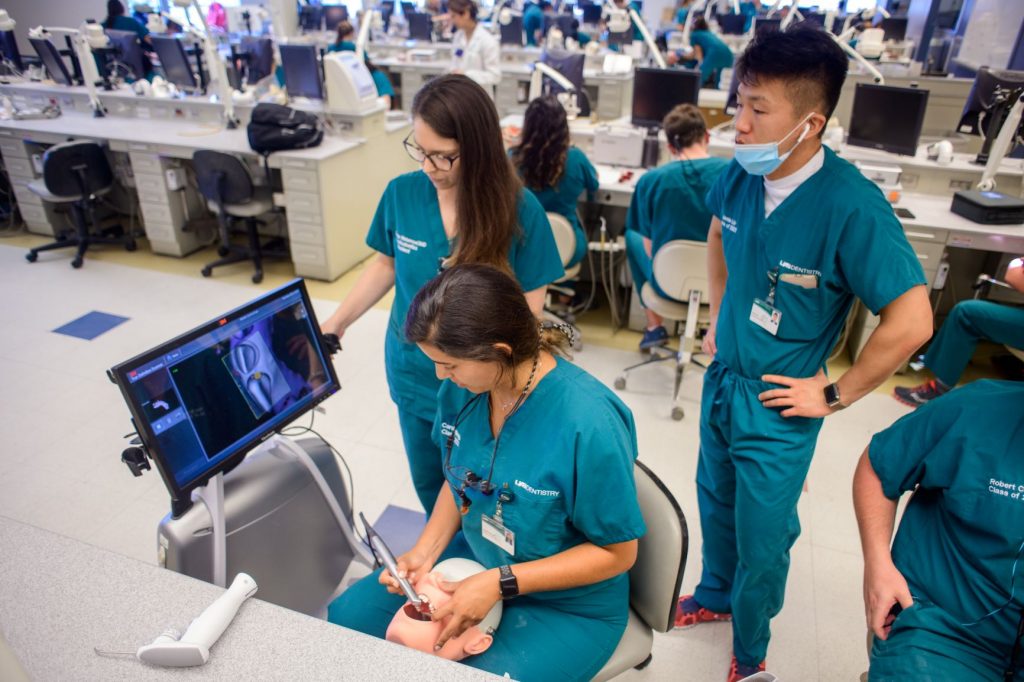
25
University of opportunity
In the fall of 2019, underrepresented students made up nearly 42 percent of UAB’s enrollment, and 20.5 percent of undergraduates were first-generation students. UAB has a long history of widening access to higher education—and potential careers in science and health care—among diverse students. Back in 1978, the Minority High School Research Apprentice Program began matching local students with faculty members for summer research experiences. Today, initiatives such as the Department of Surgery’s Pre-College Internship for Students from Minority Backgrounds and the Neuroscience Roadmap Scholars program offer similar opportunities for students along their educational journeys.
26
Successful careers begin here
More than 135,000 alumni call UAB their alma mater. Today you’ll find them across the United States and around the world, working as leaders in health care, science, business, art, engineering, government, education, and other fields. Many stay connected with UAB through the National Alumni Society, which was established in 1979 and has 63 chapters in locations ranging from Washington, D.C., to Taiwan.
27
Making a “magic bullet”
Monoclonal antibodies are copies of the immune system’s frontline defenders that are engineered to target tough diseases—including cancer, multiple sclerosis, cardiovascular disease, and rheumatoid arthritis. School of Medicine researchers played pivotal roles in translating monoclonal antibodies from a scientific dream into a crucial clinical tool.
28
A team approach
In UAB’s early years, research funding was scarce, and lab space was limited. So researchers shared resources and knowledge from several fields of study, creating a unique collaborative culture that has made UAB a pioneer in interdisciplinary education. (One example: the nation’s first optometry/M.B.A. dual-degree program.) Perhaps the best place to watch this blend at work is the University Honors Program (UHP), part of the UAB Honors College. Its undergraduate courses are taught by faculty teams representing departments across campus. Students in the recent Neighborhoods and Communities course explored everything from aging to public health to cultural identity to urban renewal. Other courses have focused on food, time, and human nature.
29
Nursing’s global gateway
Expert care knows no boundaries. Nurses treating patients in Alabama have knowledge that could benefit nurses at work in rural Haiti, or Malawi, or Thailand—and vice versa. In 1994 the School of Nursing was named a Pan American Health Organization/World Health Organization Collaborating Center, which certifies it as an international leader in nursing education. Students and faculty have crisscrossed the globe—from Chile to Uganda, Jamaica to China, and from Brazil to Jordan, to share what they have learned, serve communities, and conduct research. At the same time, nursing faculty and scholars from other parts of the world have visited UAB to expand their expertise in education, research, and practice.
30
State of care
UAB is one of America’s largest academic health centers, with 90,000 hospital discharges, more than 116,000 Emergency Department patient visits, and 1.5 million medical clinic visits.
UAB physicians provide care in metro Birmingham, Huntsville, Tuscaloosa, Selma, and Montgomery. Through partnerships and community networks, UAB shares its expertise with hospitals and medical centers across Alabama and in Florida, Georgia, and Mississippi.
The UAB Health System provides $62 million in charity care.
31
think fast(er)
Over four decades of research, Karlene Ball, Ph.D., holder of UAB’s Endowed Chair in Developmental Psychology, established cognitive testing and training techniques to help increase UFOV and improve speed of processing. National trials have showed that her training can reduce crash risk by half for older drivers—and improve the ability of older adults to perform everyday tasks more quickly. Some gains in reasoning and speed can last up to 10 years after training. The UFOV test and computer-based training have been widely adopted. Alabama and several other states have used it to help determine drivers’ fitness to remain on the road.
32
Practical impacts
Decades ago, the School of Dentistry pioneered “four-handed dentistry”—pairing a dentist with an assistant or hygienist to make treatments more efficient and effective. The technique is now standard practice worldwide. Today the school continues searching for useful solutions as the administrative hub for the National Dental Practice-Based Research Network, which engages more than 6,500 community dentists and hygienists in studies that can make an immediate impact in their clinics. Chances are, findings from the network have helped your dental practitioner provide better oral care for you and your family.
33
Inside information
Genetic medicine was in its infancy when School of Medicine researchers Wayne Finley, Ph.D., M.D., and Sara Crews Finley, M.D., opened the Southeast’s first cytogenetics laboratory in 1962. Today the UAB Undiagnosed Diseases Program, led by Bruce Korf, M.D., Ph.D., uses genomic sequencing and analysis to help patients with mysterious illnesses search for long-awaited answers. It’s possible that a patient could have a rare disease, a condition not known to exist, or a known disease with unusual symptoms, says Korf, the School of Medicine’s associate dean for genomic medicine, UAB Medicine chief genomics officer, and the Wayne H. and Sara Crews Finley Chair in Medical Genetics. UAB, together with Harvard, coordinates the National Institutes of Health’s Undiagnosed Diseases Network.
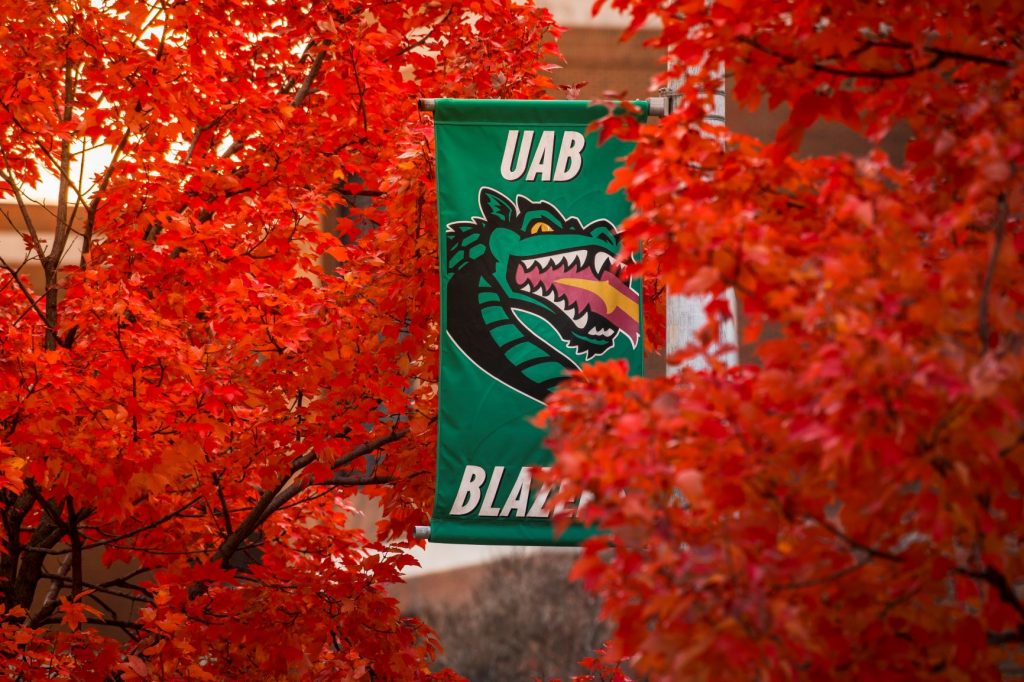
34
Healing America’s heroes
The School of Nursing is on a mission to meet the health needs of America’s growing veteran population, partnering with the Birmingham Veterans Affairs Medical Center to train future nurses and nurse practitioners. UAB is one of only 15 VA Nursing Academic Partnership sites in the country, one of just four sites with a graduate residency program for mental-health nurse practitioners, and one of eight VA National Quality Scholars Program sites—all of which expand learning opportunities. The school also enables veterans and military members to earn a nursing degree that builds upon their experiences.
35
Steps toward a sickle cell cure
There is no cure for sickle cell disease—yet. UAB research has made strides toward solutions that could one day help millions worldwide affected by the hereditary blood disorder. In 1997 UAB’s Tim Townes, Ph.D., and Thomas Ryan, Ph.D., developed the first practical animal model of sickle cell disease. A decade later, teams from UAB and the Massachusetts Institute of Technology reported the first successful treatment of sickle cell in animal models. They did it by reprogramming normal skin cells into induced pluripotent stem cells—which can develop into any type of tissue—and correcting the DNA mutation in the gene associated with sickle cell.
36
Healing a divide
Southerners are more likely to die from stroke than people in the rest of the country, and African Americans are more likely to die from stroke than whites. To learn why, the School of Public Health launched the largest population-based study of its kind, involving 30,239 participants across the United States, in 2003. Known as REGARDS (REasons for Geographic and Racial Disparities in Stroke), the study revolutionized the way national studies are conducted—and has followed up with participants every six months for more than 15 years.
37
Material success
School of Engineering students and faculty are creating the building blocks for a lighter, stronger, more efficient future. They develop and test new composites, metals, and alloys in the Materials Processing and Application Development Center (MPAD), one of the largest academic research facilities of its kind in the country. Since the 2000s, they have worked on projects for partners in the military, transportation, aviation, medical, energy, and other fields—from vehicle frames that can increase the fuel efficiency of municipal buses to wall panels that could protect lives during a tornado.
38
Going the distance
Back in 1969, UAB extended a lifeline to rural Alabama physicians with a revolutionary toll-free hotline—Medical Information Service via Telephone (MIST). Physicians could call for consultations or referrals 24 hours a day. MIST soon began taking calls from physicians outside the state and became a national model. Now UAB clinicians, partnering with the Alabama Department of Public Health, use a different kind of telehealth—of the digital video variety—to expand access to specialty care for people in rural Alabama. Via videoconferencing, patients in 60 of Alabama’s 67 counties can have a checkup with UAB clinicians while staying close to home.
39
Sharing our spark across the globe
Faculty, staff, and students are ready to lend a helping hand—no matter where that help is needed. Glimpse a few ways UAB has worked with communities around the world to meet pressing needs through research and service:
UAB has provided treatment for HIV and AIDS patients in Zambia, and the School of Nursing established a program that prepares nurses for advanced roles in care, treatment, and support of patients living with the disease.
The Sparkman Center for Global Health is expanding education access in Zambia and Ethiopia. Working with UAB schools and African developers, the center produced software that delivers digitized learning materials in rural settings and other areas with low Internet connectivity.
Thousands of men, women, and children have received free eye exams and glasses thanks to School of Optometry students, faculty, and staff. Through the Optometric Service to Humanity organization, the volunteers have made 41 annual trips to provide much-needed eye care in underserved communities in Latin America and the Caribbean.
40
Training America’s health leaders
Many presidents, CEOs, and COOs of hospitals and health systems across the country share something in common: a Master of Science in Health Administration (M.S.H.A.) degree from the School of Health Professions. The acclaimed program has more than 1,300 alumni spread throughout the United States—and even overseas—who apply their knowledge and leadership skills to impact hundreds of thousands of patients and families every day.
41
Chain of hope
UAB’s Kidney Chain has no weak links. In the series of transplant surgeries, which began in 2013, the family or friends of kidney recipients selflessly donate a kidney of their own to another person in need. Today the chain includes 114 donor-recipient pairs from 14 states and is the longest ongoing single-center paired kidney transplant chain in the nation—and probably the world. “The kidney chain is a continuing story of one sacrifice after another, all in the name of love,” says one recipient, Price Johnson. Jayme Locke, M.D., the chain coordinator and director of UAB’s Comprehensive Transplant Institute, now champions the idea of a single national exchange program that could match living donors with people who need a kidney. Such a program could double the number of living donor transplants in the United States to 12,000 per year, she estimates.
42
Closing gaps in care
In 1999, African-American women in Alabama’s Black Belt region were 17 percent less likely than white women to have regular mammograms. By 2016, the disparity had narrowed dramatically—and in some cases, more blacks than whites were getting screened. How did it happen?
UAB succeeded with support from its friends—“natural helpers” in communities trained to share life-saving information with their families and neighbors. Over the past 20 years, the Deep South Network for Cancer Control in the O’Neal Comprehensive Cancer Center at UAB has trained more than 1,200 of these trusted community health advisors (CHAs).
43
Catching cyber criminals
First, they helped track the international criminals behind social-media botnet Koobface and other spammers—a success that earned a public thank-you and a donation from Facebook. Then they busted a $70-million Ukrainian money-laundering ring and helped take down the Kelihos spambot network, responsible for hundreds of thousands of fraudulent messages and ransomware attacks on banks. Who is this dream team of digital detectives? The students and faculty of UAB’s Computer Forensics Research Lab, who link criminal justice with computer science to assist law enforcement agencies—including the FBI—and major banks, corporations, and other businesses with cybersecurity issues. Recently they have worked with Facebook to fight online drug sales. The UAB team monitors online communities to find new street names for drugs that mask illicit activity. (They’ve identified more than 350 search terms just for fentanyl.) That data helps Facebook flag content and take action.
44
Economic engine
UAB’s economic impact on the state of Alabama tops $7.15 billion each year, boosting jobs, families, businesses, and communities. Need more proof that UAB adds value to Alabama? UAB is the state’s largest single employer, with approximately 23,000 faculty and staff, and for every $1 in state funding, UAB generates $25 in economic impact.
45
Addressing an epidemic
In the mid-1980s, UAB saw a growing number of patients with AIDS-related illnesses, referred by physicians who couldn’t provide treatment. “So we embraced it,” says Michael Saag, M.D., the Jim Straley Endowed Chair in AIDS Research and the School of Medicine’s associate dean for global health. In 1988, UAB opened the 1917 Clinic—named after its street address to protect patient confidentiality—and became one of the National Institutes of Health’s seven inaugural Centers for AIDS Research. UAB quickly became a leader in providing cutting-edge care for patients, training physicians to treat HIV, and making crucial discoveries.
“What was once a death sentence when we opened the clinic is now a manageable chronic disease.”
—Michael Saag
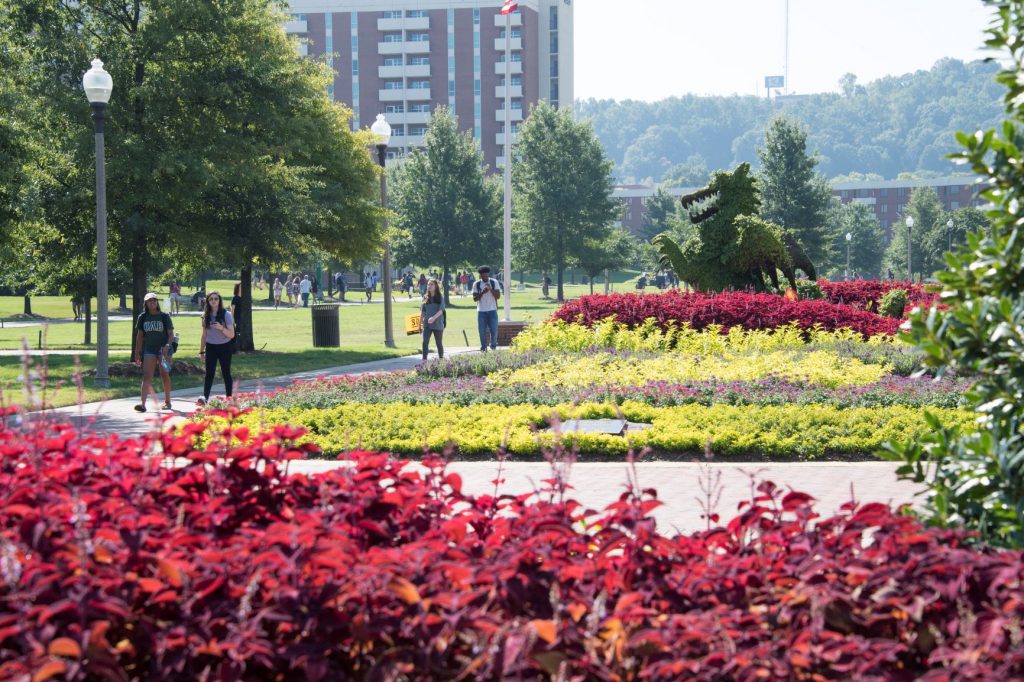
46
Setting the stage
- Destination Birmingham
The 1996 opening of the Alys Stephens Performing Arts Center marked a new era of arts and culture in Birmingham, attracting world-renowned artists to the city each year. Yo-Yo Ma, David Sedaris, Gladys Knight, Joan Baez, Willie Nelson, Queen Latifah, and Itzhak Perlman are among the famous names who have graced its stages. The center also hosts the Alabama Symphony Orchestra and the UAB departments of Music and Theatre. Across the street, the architecturally striking Abroms-Engel Institute for the Visual Arts (AEIVA), opened in 2014, brings thought-provoking exhibitions by contemporary artists to the Magic City.
- A hometown spotlight
Town and Gown Theater, part of the pre-UAB Extension Center from 1950, was a community hub for professional productions that attracted visiting stars from Broadway and Hollywood. It also helped launch the acting career of Pat Neal—now known as Fannie Flagg—who was a teenager when she made her first theatrical appearance in a Town and Gown production. James Hatcher directed the group from 1950 until his 1991 retirement.
- Art for the people
UAB spreads a love for the arts through initiatives including Meet the Artist events, which connect local school children with Alys Stephens Center performers; outreach programs in Birmingham’s Woodlawn and Norwood neighborhoods; and ArtPlay—offering classes for kids and adults in everything from jazz and sewing to improv comedy.
47
Bringing STEM statewide
Job opportunities in science, technology, education, and math (STEM) are on the upswing. But what’s the best way to spark an early interest in those subjects? For UAB’s Center for Community Outreach Development (CORD), the solution is to bring in-depth, hands-on, inquiry-based—and just plain fun—science experiences to K-12 classrooms throughout the Birmingham area. One year, middle-schoolers learned about physics by building mini roller coasters out of half tubes and marbles, while high-school students programmed their own robots. CORD also leads programs at McWane Science Center, provides summer experiences for students, and offers professional development for teachers.
48
Education for life after high school
The UAB School of Education and community partners are in the middle of a seven-year journey to prepare nearly 9,300 low-income students to succeed in postsecondary education. Through GEAR UP Alabama—or Gaining Early Awareness and Readiness for Undergraduate Programs—faculty, staff, and students are mentoring students in 42 schools across 21 counties in Alabama’s Black Belt region. The initiative began in 2014 with a $60.2-million grant, including $24.5 million from the United States Department of Education and $35.7 million from other sources. “The first three years were spent creating a foundation for students,” says professor and principal investigator Tonya Perry, Ph.D. “Now we are building on that infrastructure, providing opportunities such as dual enrollment at UAB, strategic camp experiences, ongoing ACT review, and mentoring and advising sessions to prepare them for college and careers.”
49
Treating the tiniest patients
40,000+: That’s the number of premature or ill babies treated in UAB’s Regional Neonatal Intensive Care Unit (RNICU) since it opened more than four decades ago. It’s Alabama’s only Level IV NICU, meaning it provides the highest level of care. UAB also pioneers advances in maternal, child, and family health as a member of three National Institutes of Health research networks. Some of those findings reverberate worldwide: Waldemar Carlo, Ph.D., UAB’s Edwin M. Dixon Endowed Chair in Neonatology, found that newborn-care training for midwives in developing countries could save the lives of more than 1 million babies.
50
A beacon of diversity
One look at the eclectic mix of students, faculty, and staff who call themselves Blazers, and it’s evident that diversity is welcome in Birmingham. From its earliest days, UAB has been a magnet for people with different backgrounds and viewpoints, which has helped drive its success. “We are committed to creating an environment that can serve as a model for the kind of society we are striving to build—one of inclusion, fairness, civility, and mutual respect,” says Paulette Patterson Dilworth, Ph.D., vice president for diversity, equity, and inclusion.
For the complete list visit: https://www.uab.edu/uabmagazine/features/50-ways-we-ve-changed-birmingham-alabama-and-the-world


